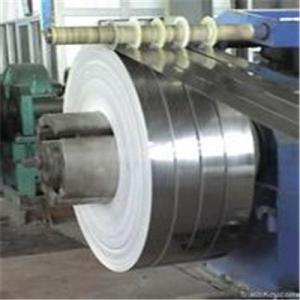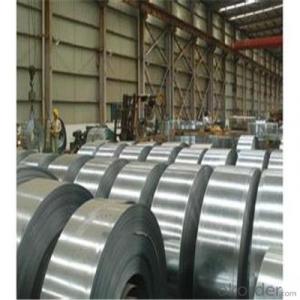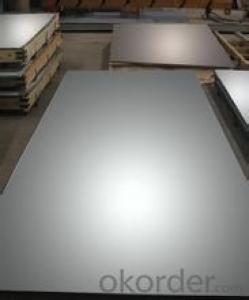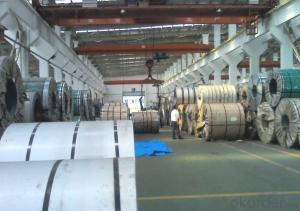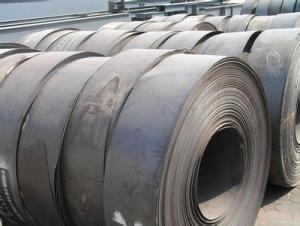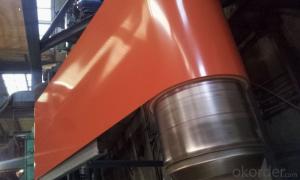Steel Strip Coils Q195 Q235 Professional Manufacturer in China
- Loading Port:
- Shanghai
- Payment Terms:
- TT OR LC
- Min Order Qty:
- 44 m.t.
- Supply Capability:
- 4433222 m.t./month
OKorder Service Pledge
OKorder Financial Service
You Might Also Like
Item specifice
Applications of Steel Strip Coils:
1:Chemical industry equipment, Industrial tanks
2:Medical Instruments,Tableware, Kitchen utensil,kitchen ware
3:Architectural purpose, Milk & Food processing facilities
4:Hospital Equipment, interior Exterior decoration for building
5:Architectural purposes, escalators, kitchen ware,vehicles
Festures of Steel Strip Coils:
1. Each coil is closely covered by oil paper or plastic film.
2. Outside it is firmly packed with sack cloth or compound paper.
3. Steel strap or PP strap to pack the outside to ensure safety.
Specifications of Steel Strip Coils:
| Description | Hot Rolled Steel Strip |
| Brand | Tianjin Metallurgical No.Steel Group |
| Specification | 1.2-6.0mm*70mm |
| Standard | AISI,ASTM,BS,DIN,GB,JIS |
| Material | Q195,Q215,Q215B,Q235,Q235B |
| Application | Widly used in welding steel pipes, and bicycle making etc. |
| Certificates | BV,SGS,ISO etc. |
| MOQ | 20 tons or according to customers’ requirement. |
| Port of Delivery | Tianjin Port of China |
| Remarks | We can provide qualify goods,competitive price and speedy delivery |
Images of Steel Strip Coils:
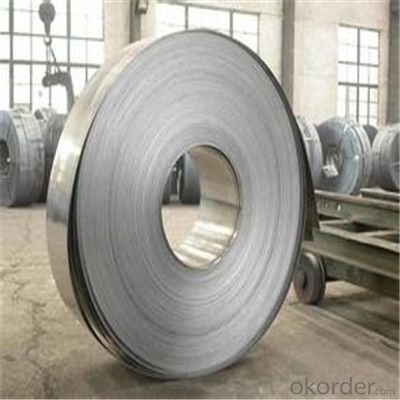
FAQ
1.What's your MOQ?
25MT, it is for one container.
2.Do you have QC teams?
Yeah, sure, our QC team is very important, they will keep the quality control for our products.
3. What's your normal delivery time?
Our delivery time about 10-20days for standard sizes, if you have other requirements like hardness and width ,it is about 20-40days.
- Q:Where is the lining board made of polyurethane lining? Please contact immediately
- The flame retardant and antistatic performance, has direct relationship with the selection of additives in the domestic production and sales of all kinds of additives manufacturers and enterprises thousands, but those additives in line with our formulation requires, for internal performance we use without affecting the polyurethane? Pengbosheng company has done numerous tests, try hundreds of flame retardant in different and antistatic agent, screened from for our formulation system of auxiliaries. Selecting the proper amount of additive can not only give full play to the performance of the assistant, but also achieve the design indexes of flame retardance and antistatic, and can not lose the superior performance of polyurethane.
- Q:What are the specifications for steel strips used in the production of fasteners?
- The production of fasteners requires steel strips with varying specifications, depending on the specific application and requirements. However, there are some common specifications for these steel strips: 1. Material: Typically, mild steel, also known as low carbon steel, is used for fastener production. This type of steel is cost-effective and offers good strength and ductility. 2. Dimensions: Steel strips for fasteners are usually supplied in coils or cut-to-length strips. The strip width can range from a few millimeters to several centimeters, depending on the size of the fasteners being produced. The strip thickness also varies based on the specific application and requirements. 3. Surface Finish: Steel strips used in fastener production often undergo surface treatments to enhance their corrosion resistance and appearance. Common surface finishes include zinc plating, galvanizing, or applying protective coatings like phosphate or black oxide. 4. Tensile Strength: The steel strip's tensile strength is a crucial specification as it determines the maximum load the fastener can withstand without breaking or deforming. The specific tensile strength requirement depends on the application and the type of fastener being produced. 5. Hardness: The hardness of the steel strip measures its resistance to indentation or deformation. Different fasteners may require different hardness levels to ensure they can withstand their intended application without failure. 6. Composition and Chemical Properties: Steel strips used in fastener production must meet specific chemical composition requirements to ensure desired mechanical properties. The levels of carbon, manganese, sulfur, phosphorus, and other elements are controlled to achieve the desired strength, ductility, and other performance characteristics. It is important to note that these specifications can vary depending on the specific standards and regulations followed in different industries or regions. Therefore, consulting relevant industry standards or the manufacturer's specifications is advisable for precise details about the steel strips used in fastener production.
- Q:How are steel strips used in the production of metal cabinetry?
- Steel strips are used in the production of metal cabinetry as they provide strength, durability, and structural stability to the cabinets. They are typically used as reinforcements or frames to support the weight of the cabinetry and ensure its long-lasting performance. Additionally, steel strips can be shaped and welded into various configurations to create the desired cabinet designs and dimensions.
- Q:Can steel strips be used for making medical equipment?
- Yes, steel strips can be used for making medical equipment. Steel is a commonly used material in the medical industry due to its strength, durability, and resistance to corrosion. It is often used in the manufacturing of surgical instruments, medical implants, and other medical equipment.
- Q:Are steel strips suitable for making fasteners?
- Indeed, steel strips prove to be a suitable option for fabricating fasteners. Renowned for its robustness and longevity, steel emerges as an optimal material for the production of fasteners. By effortlessly molding steel strips into various configurations and dimensions, it becomes possible to manufacture a diverse range of fasteners, including screws, bolts, nuts, and clips. Moreover, steel strips exhibit exceptional resistance to corrosion, ensuring that the fasteners remain fully intact and operational even in the face of harsh conditions. Furthermore, the hardness of steel guarantees dependable tensile strength, thus enabling fasteners to securely bind objects together. Ultimately, steel strips offer a dependable and versatile alternative for the creation of fasteners.
- Q:Are steel strips prone to bending or flexing?
- Yes, steel strips are prone to bending or flexing due to their relatively thin and elongated shape.
- Q:Are steel strips resistant to chemicals or acids?
- Yes, steel strips are generally resistant to chemicals and acids, but their resistance can vary depending on the type of steel and the specific chemical or acid involved.
- Q:Can steel strips be used for making conveyor belts?
- Certainly! Conveyor belts can be manufactured using steel strips. Steel strips have numerous advantages when it comes to conveyor belt applications. To begin with, they are highly durable and possess exceptional tensile strength, making them ideal for handling heavy loads and enduring harsh operating conditions. Not only can they withstand impacts, abrasions, and wear, but they also enhance the conveyor belt's lifespan. Furthermore, steel strips offer excellent stability and dimensional accuracy, which are vital for maintaining proper tracking and alignment of the conveyor belt. Moreover, steel strips can be easily connected to form a continuous belt, enabling seamless material transportation. All in all, due to their strength, durability, and versatility, steel strips are widely favored in the manufacturing of conveyor belts.
- Q:What is the purpose of hardening and tempering steel strips?
- The purpose behind the hardening and tempering of steel strips is to enhance their mechanical properties and enhance their overall performance in various applications. To harden steel strips, they are heated to a specific temperature called the critical temperature and then rapidly cooled by quenching them in oil, water, or air. This rapid cooling process transforms the crystalline structure of the steel, resulting in a material that is harder and stronger. Hardened steel strips are highly resistant to deformation, wear, and abrasion, making them ideal for applications that require high strength and durability, such as cutting tools, springs, and machine components. However, the downside of hardened steel strips is that they can become brittle and prone to cracking. This is where tempering comes into play. Tempering involves reheating the hardened steel strips to a lower temperature and then cooling them slowly. This controlled heating and cooling process allows for the adjustment of the steel's hardness and toughness, finding a balance between strength and its ability to withstand impacts and shocks. By hardening and tempering steel strips, manufacturers can customize the material's properties to meet specific requirements. This allows the steel to possess a combination of hardness, strength, toughness, and flexibility that is suitable for a wide range of applications. Furthermore, hardening and tempering can also enhance the steel's resistance to corrosion and extend its service life.
- Q:What are the different methods for slitting steel strips?
- There are several different methods for slitting steel strips, each with its own advantages and limitations. The choice of method depends on factors such as the desired strip width, thickness, and material properties. Here are some common methods used in the steel industry: 1. Rotary Shear Slitting: This method involves using rotating circular blades to cut the steel strip. The blades are positioned in a way that they create a shearing action, resulting in a clean and precise cut. Rotary shear slitting is capable of achieving high production speeds and is suitable for thinner gauge materials. 2. Loop Slitting: In loop slitting, the steel strip is fed through a loop control system that maintains constant tension. The strip is then cut using either a rotary shear or straight knife slitting method. Loop slitting is often used for thicker gauge materials or when high strip tension is required. 3. Crush Slitting: Crush slitting involves passing the steel strip through a set of rollers that apply pressure to crush and cut the material. This method is commonly used for cutting softer materials, as it minimizes the risk of fraying or edge deformation. However, crush slitting may not be suitable for thicker or harder steel strips. 4. Laser Slitting: Laser technology is increasingly being used for slitting steel strips. A high-powered laser beam is directed onto the strip, melting and vaporizing the material along the desired cutting path. Laser slitting offers precise and narrow cuts, making it ideal for high-precision applications. However, it can be slower and more expensive than other methods. 5. Guillotine Slitting: Guillotine slitting involves using a straight knife or blade to cut the steel strip. The blade is positioned vertically and moves in a downward motion to shear the material. Guillotine slitting is commonly used for thicker gauge materials or when a clean and straight edge is required. 6. Score Slitting: Score slitting involves using a blade or wheel to score the surface of the steel strip without fully cutting through. The strip is then bent or flexed at the scored line to complete the cut. Score slitting is often used for thin gauge materials or when minimizing edge deformation is important. Each of these methods has its own advantages and limitations, and the choice of method depends on the specific requirements of the steel strip slitting process. Manufacturers and steel processors carefully consider factors such as strip thickness, width, material properties, desired edge quality, production speed, and cost when selecting the most appropriate method for their application.
1. Manufacturer Overview |
|
|---|---|
| Location | |
| Year Established | |
| Annual Output Value | |
| Main Markets | |
| Company Certifications | |
2. Manufacturer Certificates |
|
|---|---|
| a) Certification Name | |
| Range | |
| Reference | |
| Validity Period | |
3. Manufacturer Capability |
|
|---|---|
| a)Trade Capacity | |
| Nearest Port | |
| Export Percentage | |
| No.of Employees in Trade Department | |
| Language Spoken: | |
| b)Factory Information | |
| Factory Size: | |
| No. of Production Lines | |
| Contract Manufacturing | |
| Product Price Range | |
Send your message to us
Steel Strip Coils Q195 Q235 Professional Manufacturer in China
- Loading Port:
- Shanghai
- Payment Terms:
- TT OR LC
- Min Order Qty:
- 44 m.t.
- Supply Capability:
- 4433222 m.t./month
OKorder Service Pledge
OKorder Financial Service
Similar products
New products
Hot products
Related keywords

